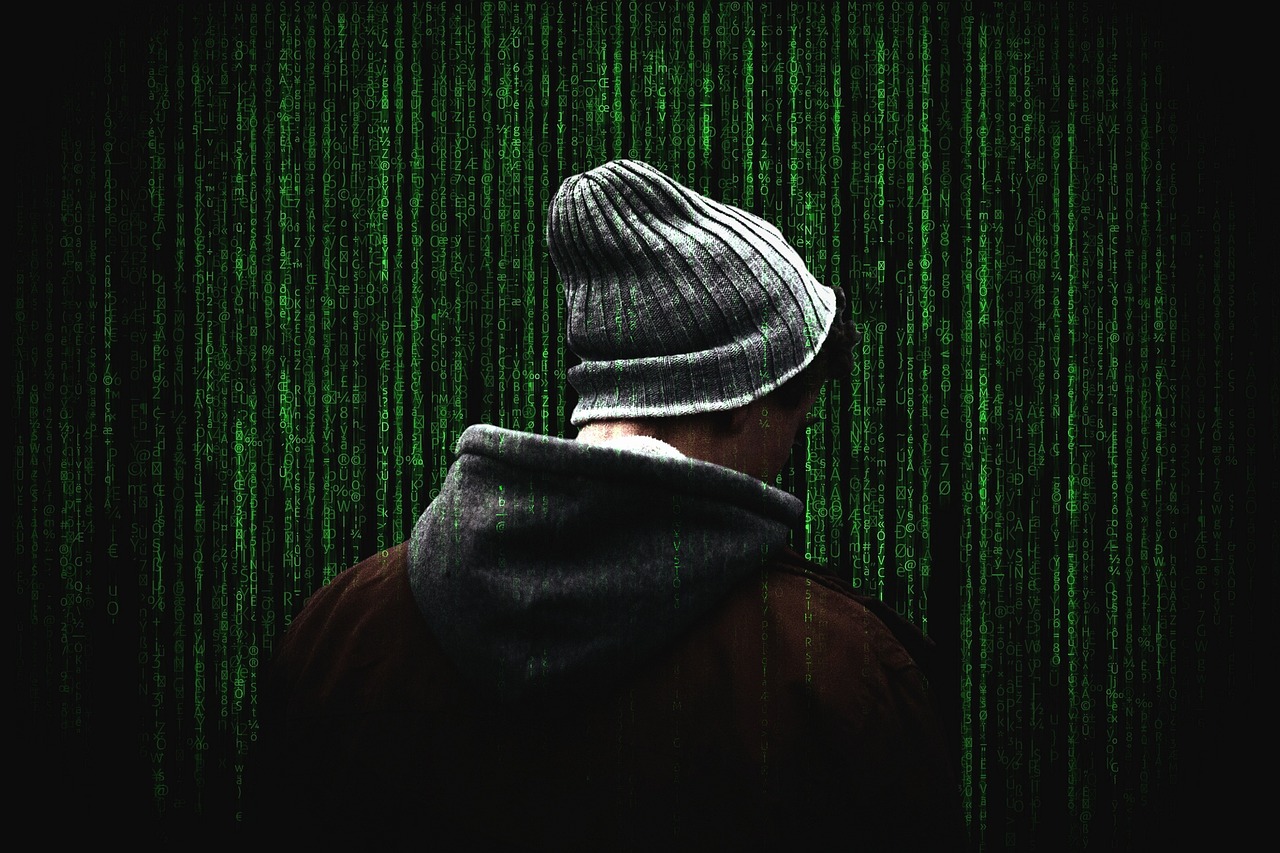Cyberattacks and Terrorism - What is the connection?
The digital age has brought with it a new frontier of threats that intertwine technology with traditional forms of violence. At the heart of this evolution lies the complex relationship between cyberattacks and terrorism. You might be wondering, how exactly do these two seemingly different worlds collide? Well, the answer is both fascinating and alarming. Cyberattacks have become tools in the arsenal of modern terrorism, enabling perpetrators to inflict harm and spread fear without the need for physical presence. This article will unravel the intricate threads connecting these two phenomena, shedding light on how they influence each other and the implications they hold for national security.
In a world where our lives are increasingly intertwined with technology, the potential for cyberterrorism poses a significant threat. Imagine a scenario where a terrorist group launches a cyberattack on a country's power grid, plunging entire cities into darkness. This isn't just a plot from a dystopian movie; it's a reality that governments and organizations are grappling with. The implications of such attacks can be devastating, affecting not only infrastructure but also the very fabric of society.
As we delve deeper into this subject, it's essential to understand that cyberterrorism is not just about hacking into systems; it's about leveraging technology to achieve ideological, political, or financial goals. This amalgamation of traditional terrorism tactics with cutting-edge technology creates a unique challenge for national security. The stakes are higher than ever, and the need for robust countermeasures is more pressing.
In the following sections, we'll explore the evolution of cyberattacks, the motivations behind them, and the strategies being implemented to combat this growing threat. It's a journey into the heart of a modern battlefield where the lines between physical and digital warfare are increasingly blurred.
- What is cyberterrorism? - Cyberterrorism refers to the use of digital attacks by terrorist groups to cause harm or instill fear, often targeting critical infrastructure.
- How do cyberattacks differ from traditional terrorism? - While traditional terrorism often involves physical violence, cyberattacks utilize technology to achieve similar goals, often without direct confrontation.
- What are some examples of cyberterrorism? - Notable examples include attacks on power grids, healthcare systems, and government databases that disrupt services and cause public panic.
- How can governments combat cyberterrorism? - Governments are increasing international cooperation, enhancing legislation, and implementing advanced cybersecurity measures to mitigate risks.

Understanding Cyberterrorism
Cyberterrorism is a term that has gained significant traction in recent years, combining the age-old concept of terrorism with the modern capabilities of the digital world. At its core, cyberterrorism refers to the use of the internet and digital technologies to conduct acts of terror. This can include hacking into critical infrastructure, spreading propaganda, or even launching attacks that disrupt essential services. The implications of these actions are profound, as they can lead to widespread chaos and fear, much like traditional forms of terrorism.
To truly grasp the essence of cyberterrorism, we must first understand its distinguishing characteristics. Unlike conventional terrorism, which often relies on physical acts of violence, cyberterrorism operates in the realm of cyber space. This means that the perpetrators can carry out their attacks from virtually anywhere in the world, making it incredibly challenging for authorities to track them down. The anonymity provided by the internet allows these actors to plan and execute their strategies with relative ease.
Moreover, cyberterrorism targets not just individuals but entire nations and their infrastructures. For instance, a cyber attack can cripple power grids, disrupt communication systems, and even compromise security protocols in sensitive sectors like healthcare. Such attacks can have cascading effects, leading to a breakdown of trust in government institutions and creating a climate of fear among the populace. The digital age has transformed the battlefield, and the stakes are higher than ever.
In essence, cyberterrorism is characterized by:
- Digital Infrastructure Targeting: Attacks often aim at critical systems that support daily life.
- Anonymity: Perpetrators can remain hidden behind layers of technology.
- Psychological Impact: The fear generated by such attacks can be as damaging as physical violence.
As we delve deeper into the complexities of cyberterrorism, it's crucial to recognize how it differs from traditional forms of terrorism. While both aim to instill fear and achieve political or ideological goals, the methods and tools employed in cyberterrorism are unique to the digital landscape. In this new arena, the battlefield is not defined by borders, and the weapons are lines of code rather than guns or bombs. This evolution demands a reevaluation of our security strategies and responses.
In summary, understanding cyberterrorism involves recognizing its blend of technology and traditional terror tactics. As we continue to navigate this digital age, the importance of robust cybersecurity measures and awareness of the potential threats cannot be overstated. The fight against cyberterrorism is not just a battle for information; it's a battle for the very fabric of our society.

The Evolution of Cyber Attacks
The landscape of cyber attacks has undergone a dramatic transformation over the past few decades, evolving from simple pranks and vandalism to sophisticated operations that can disrupt entire nations. In the early days of the internet, cyber attacks were often the work of lone hackers seeking notoriety or testing their skills. However, as technology advanced, so did the motivations and capabilities of those engaging in cyber warfare. Today, we face a complex web of threats that can be orchestrated by individuals, organized crime groups, and even nation-states.
One of the pivotal moments in this evolution was the emergence of the Internet of Things (IoT). As more devices become interconnected, the potential attack surface for cybercriminals has expanded exponentially. Imagine a world where your refrigerator can be hacked to create a power outage, or where your smart thermostat can be manipulated to cause chaos in a city. This interconnectedness has made it easier for attackers to exploit vulnerabilities, leading to more extensive and impactful cyber attacks.
Throughout the years, we've witnessed a series of landmark incidents that have reshaped our understanding of cyber threats. For example, the Stuxnet worm, discovered in 2010, was a game-changer in the realm of cyber warfare. It was specifically designed to target Iran's nuclear facilities, showcasing how cyber attacks could be used as a tool for geopolitical objectives. This incident marked a shift in the perception of cyber attacks from mere nuisances to serious threats that could potentially lead to physical destruction.
Moreover, the rise of ransomware has introduced a new layer of complexity to the cyber threat landscape. Ransomware attacks, where hackers encrypt a victim's data and demand payment for its release, have become alarmingly common. High-profile incidents, such as the Colonial Pipeline attack in 2021, highlighted the vulnerabilities in critical infrastructure and the dire consequences of cyber extortion. These attacks not only disrupt services but also instill fear in the hearts of the public and businesses alike.
As we look to the future, the evolution of cyber attacks shows no signs of slowing down. With advancements in artificial intelligence and machine learning, cybercriminals are becoming more adept at launching attacks that are not only more effective but also harder to detect. The potential for automated attacks that can adapt and evolve in real-time poses a significant challenge for cybersecurity professionals.
In summary, the evolution of cyber attacks reflects the rapid pace of technological advancement and the increasing interconnectedness of our world. As we continue to embrace new technologies, it is crucial to remain vigilant and proactive in our efforts to safeguard against these ever-evolving threats. The stakes are high, and the consequences of inaction could be catastrophic.
- What are the most common types of cyber attacks? Cyber attacks can range from phishing and malware to ransomware and DDoS attacks, each with its own tactics and targets.
- How can individuals protect themselves from cyber attacks? Using strong, unique passwords, enabling two-factor authentication, and keeping software updated are essential steps for personal cybersecurity.
- What role do governments play in combating cyber terrorism? Governments are responsible for creating policies, enforcing laws, and collaborating internationally to enhance cybersecurity and respond to cyber threats.

Historical Examples of Cyberterrorism
The realm of cyberterrorism is not merely a theoretical construct; it has manifested in several significant instances that have left an indelible mark on nations and organizations alike. One of the earliest examples occurred in 2007 when Estonia faced a series of cyberattacks that paralyzed government websites, banks, and media outlets. These attacks were widely attributed to Russian hackers, reportedly in retaliation for the relocation of a Soviet war memorial. This incident underscored how a nation-state could leverage cyber capabilities to inflict damage and sow discord, highlighting the vulnerabilities of even the most technologically advanced societies.
Another prominent case took place in 2010 with the emergence of the Stuxnet worm, which targeted Iran's nuclear facilities. This sophisticated piece of malware was designed to sabotage Iran's uranium enrichment efforts and is believed to have been a joint operation by the United States and Israel. Stuxnet not only demonstrated the potential for cyber weapons to achieve geopolitical objectives but also raised questions about the ethical implications of using such tactics in warfare.
Further, the 2015 cyberattack on the Ukrainian power grid serves as a stark reminder of the potential consequences of cyberterrorism. Hackers, allegedly linked to Russian state-sponsored groups, managed to cut off electricity to over 200,000 residents during a harsh winter. This incident illustrated the vulnerability of critical infrastructure to cyber threats and showed how cyberterrorism could lead to real-world chaos and suffering.
In addition to these high-profile cases, there are numerous lesser-known incidents that also illustrate the rise of cyberterrorism. For instance, in 2016, the Democratic National Committee (DNC) was hacked, resulting in the leak of sensitive information that had far-reaching implications for the U.S. presidential election. The breach was attributed to Russian operatives and raised alarms about the integrity of democratic processes in the digital age.
These examples highlight a critical point: the motivations behind cyberterrorism can vary widely, from political objectives to ideological beliefs. The perpetrators often operate under the guise of anonymity, making it challenging for authorities to track them down and hold them accountable. Moreover, the psychological impact of these attacks can be profound, instilling fear and uncertainty in the populations they target.
As we analyze these historical examples, it becomes clear that the evolution of cyberterrorism poses a multifaceted challenge for national security. Governments and organizations must adapt their strategies to counter these digital threats effectively. The lessons learned from past incidents can serve as a foundation for developing robust defenses against future attacks.
- What is cyberterrorism? Cyberterrorism refers to the use of digital attacks by individuals or groups to cause harm or instill fear, often for ideological or political purposes.
- How do cyberattacks differ from traditional terrorism? While traditional terrorism often involves physical violence, cyberattacks leverage technology to disrupt systems and cause chaos without physical presence.
- What are some examples of cyberterrorism? Notable examples include the 2007 cyberattacks on Estonia, the 2010 Stuxnet worm attack on Iran, and the 2015 cyberattack on Ukraine's power grid.
- How can nations protect themselves against cyberterrorism? Nations can enhance their cybersecurity measures, foster international cooperation, and implement comprehensive legislation to mitigate risks.

Impact on Critical Infrastructure
In today's interconnected world, the impact of cyberterrorism on critical infrastructure cannot be overstated. Critical infrastructure refers to the systems and assets that are essential for the functioning of society, including power grids, water supply systems, transportation networks, and healthcare facilities. When these systems are targeted by cyberattacks, the consequences can be devastating, leading to widespread disruption and chaos.
Imagine waking up to find that your city's power grid has been compromised, leaving you in the dark with no electricity for heating, cooling, or cooking. This scenario is not just a figment of the imagination; it is a real threat that cyberterrorists can exploit. The potential for massive outages and service disruptions raises serious concerns for national security and public safety.
Cyberterrorists often employ various tactics to infiltrate and disrupt these critical systems. For instance, they may use malware to manipulate control systems, leading to failures in essential services. The Stuxnet worm, which targeted Iran's nuclear facilities, is a prime example of how cyber tools can inflict physical damage. Such attacks serve as a reminder that the lines between digital and physical domains are increasingly blurred.
The consequences of these attacks extend beyond immediate disruptions; they can also have long-term implications. For example, a successful cyberattack on a hospital's information system could compromise patient data, delay treatments, and even endanger lives. This not only affects the healthcare system but also erodes public trust in institutions that are supposed to protect us.
To illustrate the potential impacts further, consider the following table highlighting different sectors of critical infrastructure and the possible effects of cyberterrorism:
| Sector | Potential Impact |
|---|---|
| Energy | Power outages, system failures, economic losses |
| Water | Contaminated water supply, public health crises |
| Transportation | Disruptions in public transport, accidents, logistical nightmares |
| Healthcare | Data breaches, delayed medical services, compromised patient safety |
Moreover, the psychological impact of such attacks can be profound. When populations experience disruptions to essential services, it can lead to a sense of vulnerability and fear. The uncertainty of not knowing when services will resume can create panic and anxiety among citizens, further destabilizing communities.
In conclusion, the impact of cyberterrorism on critical infrastructure is a pressing issue that requires immediate attention. As technology continues to advance, so too do the tactics employed by cyberterrorists. It is crucial for governments, organizations, and individuals to be aware of these threats and to take proactive steps to safeguard our essential services. After all, in a world where our lives are increasingly dependent on technology, the security of our critical infrastructure is more important than ever.
- What is critical infrastructure? Critical infrastructure refers to the essential systems and assets that support the functioning of society, such as power, water, and healthcare.
- How do cyberattacks affect critical infrastructure? Cyberattacks can disrupt essential services, leading to outages, data breaches, and potentially endangering lives.
- What measures can be taken to protect critical infrastructure? Implementing advanced cybersecurity measures, conducting regular assessments, and fostering international cooperation are vital steps in protecting critical infrastructure.

Psychological Warfare and Fear
In the realm of cyberterrorism, the effects extend far beyond mere physical damage or disruption; they delve deep into the psyche of individuals and communities. The very essence of psychological warfare is to instill fear and uncertainty, creating an environment where people feel vulnerable and anxious. Imagine waking up to find that your bank account has been drained overnight, not by a thief in the night, but by an unseen hacker. This scenario illustrates just how pervasive and invasive cyber attacks can be, leaving victims grappling with feelings of helplessness and paranoia.
Cyberterrorism operates on a unique level of fear. Unlike traditional terrorism, which often relies on visible and dramatic acts of violence, cyberterrorism can be stealthy, leaving no physical traces. The fear it generates is often more insidious, creeping into daily life and altering how people interact with technology. For instance, large-scale data breaches can lead to a distrust of online platforms, affecting everything from social media usage to online shopping. This erosion of trust can significantly impact the economy and social cohesion.
Moreover, the psychological impact of cyberterrorism can be magnified by the nature of the digital landscape. News spreads rapidly online, and the viral nature of information can amplify fear. When a significant cyber attack occurs, the media coverage often heightens the sense of vulnerability. People start to question their safety online, asking themselves:
- What if my personal information gets stolen?
- How secure is my online banking?
- Can I trust the technology I use daily?
These questions linger in the minds of individuals, creating a pervasive atmosphere of anxiety. The fear of the unknown becomes a powerful tool for those who wish to manipulate public perception and behavior. Terrorist organizations may exploit this fear to further their agendas, using cyber attacks as a means to coerce governments or societies into compliance.
Furthermore, the psychological ramifications of cyberterrorism extend to national security as well. Governments are often pressured to respond decisively to cyber threats, not only to protect infrastructure but also to reassure the public. This can lead to an overreaction, where measures are taken that may infringe on personal freedoms in the name of security. The delicate balance between security and liberty becomes a contentious issue, with citizens caught in the crossfire of fear and governmental control.
In conclusion, the psychological warfare waged through cyberterrorism is a complex interplay of fear, uncertainty, and manipulation. As society becomes increasingly reliant on technology, understanding and addressing these psychological impacts is crucial. The challenge lies not only in fortifying our digital defenses but also in fostering a sense of resilience within communities to withstand the psychological toll of these attacks.
- What is cyberterrorism? Cyberterrorism refers to the use of the internet and digital technologies to conduct terrorist activities, aiming to cause harm or instill fear in a population.
- How does cyberterrorism differ from traditional terrorism? While traditional terrorism often involves physical acts of violence, cyberterrorism utilizes technology to disrupt systems and instill fear, often without direct physical confrontation.
- What are the psychological effects of cyberterrorism? The psychological effects include increased anxiety, fear of the unknown, and a general sense of vulnerability regarding personal and national security.
- How can individuals protect themselves from cyberterrorism? Individuals can enhance their online security by using strong passwords, enabling two-factor authentication, and being cautious about sharing personal information online.

Motivations Behind Cyberterrorism
The motivations behind cyberterrorism are as complex and varied as the individuals and groups that engage in these attacks. At its core, cyberterrorism is often driven by a blend of ideological, political, and financial factors. Understanding these motivations is crucial for developing effective countermeasures and strategies to combat this modern threat. Just as traditional terrorism seeks to instill fear and achieve specific goals, cyberterrorism operates on a similar premise but leverages technology as its weapon of choice.
One of the primary motivations is ideology. Many cyberterrorists are driven by a strong belief system, whether it be religious extremism, political radicalism, or social justice. These individuals or groups view cyberattacks as a means to advance their cause, disrupt societal norms, or retaliate against perceived injustices. For instance, hacktivist groups like Anonymous have conducted attacks against organizations they believe are violating human rights or engaging in unethical practices. Their actions are often justified by a desire to expose wrongdoing and rally public support for their cause.
Political motivations also play a significant role in cyberterrorism. In an increasingly interconnected world, the ability to influence political outcomes through digital means has become a powerful tool. Cyberterrorists may target government websites, steal sensitive information, or disrupt electoral processes to undermine trust in institutions. For example, the interference in electoral processes in various countries has highlighted how cyberattacks can sway public opinion and create chaos, all while operating from behind the veil of anonymity.
Financial gain is another critical motivation. Some cyberterrorists engage in cybercrime as a means to fund their activities or support their organizations. This can include ransomware attacks, where hackers encrypt a victim's data and demand payment for its release. The profits from these attacks can be substantial, enabling groups to finance further operations, recruit new members, or purchase advanced tools and technologies. In this sense, cyberterrorism can be viewed as a lucrative business model that combines criminality with ideological goals.
In addition to these motivations, there is a psychological aspect to consider. The act of conducting a cyberattack can provide a sense of power and control to the perpetrators. The anonymity of the digital world allows individuals to act without immediate consequences, making it easier for them to engage in risky behaviors. This psychological thrill can be a motivating factor, especially for younger individuals who may be drawn to the idea of being part of a larger movement or making a significant impact without the physical risks associated with traditional terrorism.
To summarize, the motivations behind cyberterrorism are multifaceted and interconnected. They range from ideological beliefs and political agendas to financial incentives and psychological gratification. Understanding these motivations not only helps in the development of countermeasures but also sheds light on the broader implications of cyberterrorism in our increasingly digital society. As we continue to navigate this complex landscape, it becomes essential to address these underlying factors to effectively combat the threat posed by cyberterrorism.
- What is cyberterrorism? Cyberterrorism combines traditional terrorist tactics with cyber capabilities to disrupt critical infrastructure and instill fear.
- What motivates individuals to engage in cyberterrorism? Motivations include ideology, political goals, financial gain, and psychological factors.
- How can we combat cyberterrorism? Effective countermeasures include international cooperation, legislation, and public awareness initiatives.

Countermeasures Against Cyberterrorism
As the digital landscape evolves, so do the threats posed by cyberterrorism. Governments and organizations worldwide are stepping up their game to combat these insidious attacks. The fight against cyberterrorism involves a multifaceted approach that combines technology, policy, and international cooperation. In essence, it’s a digital arms race where preparedness is key. But how exactly are we gearing up to face these modern threats?
One of the primary countermeasures is the implementation of advanced cybersecurity technologies. This includes the use of firewalls, intrusion detection systems, and encryption protocols that safeguard sensitive information. For instance, organizations are increasingly adopting Artificial Intelligence (AI) and Machine Learning (ML) to detect anomalies in network traffic, enabling them to respond to threats in real-time. Imagine having a virtual security guard that never sleeps, constantly monitoring for suspicious activity—that’s the power of AI in cybersecurity!
In addition to technological advancements, legislation plays a crucial role in the fight against cyberterrorism. Governments are enacting laws that not only penalize cybercriminals but also mandate organizations to adhere to strict cybersecurity standards. Recent legislative efforts have focused on enhancing data privacy and security measures, thus fortifying the digital infrastructure that supports our daily lives. For example, the General Data Protection Regulation (GDPR) in Europe has set a precedent for data protection laws worldwide, encouraging organizations to take cybersecurity seriously.
Another significant aspect is international cooperation. Cyberterrorism knows no borders, which is why countries must work together to share intelligence and resources. Collaborative efforts such as the European Union's Cybersecurity Strategy highlight the importance of a unified front against cyber threats. This cooperation often involves joint training exercises, intelligence sharing, and the establishment of international norms for cybersecurity. When nations unite, they create a formidable barrier against those who wish to exploit digital vulnerabilities.
Moreover, public awareness and education are vital components in the countermeasure arsenal. By educating citizens about the risks of cyberterrorism and promoting safe online practices, we can create a more resilient society. Initiatives aimed at raising awareness about phishing scams, password security, and safe browsing habits empower individuals to protect themselves and their data. After all, knowledge is power, and in the realm of cybersecurity, it can be the difference between safety and vulnerability.
In conclusion, countering cyberterrorism is not a one-size-fits-all solution; it requires a blend of advanced technologies, robust legislation, international collaboration, and public awareness. As we navigate this digital age, it’s essential to stay vigilant and proactive. The stakes are high, and the consequences of inaction can be devastating. So, let’s embrace these countermeasures and work together to create a safer digital environment for everyone.
- What is cyberterrorism? Cyberterrorism refers to the use of digital attacks by individuals or groups to cause harm, instill fear, or coerce governments or societies.
- How can individuals protect themselves from cyberterrorism? Individuals can enhance their cybersecurity by using strong, unique passwords, enabling two-factor authentication, and being aware of phishing scams.
- What role does international cooperation play in combating cyberterrorism? International cooperation is crucial for sharing intelligence, resources, and best practices to effectively counter cyber threats that cross borders.
- Are there specific laws against cyberterrorism? Yes, many countries have enacted laws to penalize cybercriminal activities and to establish cybersecurity standards for organizations.

International Cooperation
In today's interconnected world, has become a cornerstone in the fight against cyberterrorism. The digital landscape knows no borders, which means that cyber threats can originate from anywhere and can target victims across the globe. This reality underscores the necessity for nations to work together, sharing intelligence, resources, and strategies to effectively counteract these threats.
Countries are increasingly recognizing that a solitary approach is insufficient to tackle the complexities of cyberterrorism. For instance, when one nation experiences a cyber attack, the repercussions can ripple through various sectors worldwide. This interconnectedness has led to the establishment of numerous international frameworks and coalitions aimed at enhancing cybersecurity.
One notable example of such cooperation is the European Union Agency for Cybersecurity (ENISA), which fosters collaboration among EU member states to improve their cybersecurity capabilities. Similarly, the North Atlantic Treaty Organization (NATO) has also prioritized cybersecurity, recognizing it as a critical component of national security. Through joint exercises, shared intelligence, and collaborative research initiatives, these organizations work to strengthen the collective defense against cyber threats.
Moreover, international partnerships extend beyond formal organizations. Countries often engage in bilateral agreements to enhance cybersecurity measures. These partnerships can include:
- Information sharing on potential threats and vulnerabilities
- Joint training exercises to prepare for cyber incidents
- Collaborative research on emerging cyber threats
For instance, the United States has established various cybersecurity agreements with countries like Israel and Australia, focusing on mutual defense against cyber attacks. Such collaborations not only bolster national defenses but also foster a sense of global unity in combating a shared threat.
However, despite these efforts, challenges remain. Different countries have varying degrees of cybersecurity maturity, legal frameworks, and political will. This disparity can hinder effective cooperation. To overcome these obstacles, nations must engage in continuous dialogue to align their strategies and policies. The development of common standards and protocols could also pave the way for more seamless collaboration.
Ultimately, the fight against cyberterrorism is a collective endeavor. As the digital realm continues to evolve, so too must our approaches to defending against it. By fostering strong international cooperation, we can create a more resilient global community capable of withstanding the threats posed by cyberterrorism.
Q1: Why is international cooperation important in combating cyberterrorism?
A1: International cooperation is crucial because cyber threats can cross borders easily. By sharing intelligence and resources, countries can better prepare for and respond to cyber attacks, creating a united front against cyberterrorism.
Q2: What are some examples of international cybersecurity organizations?
A2: Notable organizations include the European Union Agency for Cybersecurity (ENISA) and NATO, both of which promote cooperation among member states to enhance cybersecurity measures.
Q3: How can countries improve their cooperation in cybersecurity?
A3: Countries can improve cooperation by engaging in bilateral agreements, participating in joint training exercises, and aligning their legal frameworks and cybersecurity policies.

Legislation and Policy Development
In the ever-evolving landscape of cyber threats, play a crucial role in safeguarding national security and public safety. Governments worldwide are recognizing the urgency of addressing cyberterrorism through comprehensive legal frameworks. These frameworks not only aim to protect critical infrastructure but also to create a robust system for responding to and mitigating cyber threats.
One of the key aspects of effective legislation is the need for adaptability. As technology advances, so do the tactics employed by cybercriminals and terrorists. Therefore, laws must be flexible enough to accommodate new challenges. For instance, the introduction of regulations that govern data protection, privacy, and cybersecurity standards is essential. The General Data Protection Regulation (GDPR) in the European Union serves as a prime example of how legislation can evolve to address the complexities of the digital age.
Moreover, governments are increasingly focusing on international cooperation to combat cyberterrorism. Cyber threats often transcend borders, making it imperative for nations to collaborate. Treaties and agreements, such as the Budapest Convention on Cybercrime, facilitate the sharing of intelligence and resources, enhancing the global response to cyber incidents. This international framework helps establish a unified approach, making it harder for cyberterrorists to find safe havens.
In addition to international agreements, many countries are enacting specific laws aimed at countering cyberterrorism. These laws may include provisions for:
- Enhanced penalties for cyber crimes
- Mandatory reporting of cyber incidents
- Increased funding for cybersecurity initiatives
- Establishment of national cybersecurity agencies
For example, the United States has implemented the Cybersecurity Information Sharing Act (CISA), which encourages private companies to share information about cyber threats with the government. Such initiatives not only bolster national security but also foster a culture of vigilance and preparedness among businesses and citizens alike.
However, the development of legislation must also strike a balance between security and individual rights. As governments ramp up their efforts to combat cyberterrorism, concerns about privacy and civil liberties surface. Policymakers must navigate these waters carefully, ensuring that measures taken do not infringe upon the rights of citizens. This delicate balance is crucial in maintaining public trust while effectively combating the ever-present threat of cyberterrorism.
In conclusion, the landscape of cyberterrorism is complex and continually changing. As such, effective legislation and policy development are vital in addressing these challenges. By fostering international cooperation, adapting to new technologies, and ensuring a balance between security and individual rights, governments can better protect their citizens from the looming threat of cyberterrorism.
- What is cyberterrorism? Cyberterrorism refers to the use of the internet and digital technologies to carry out terrorist activities, targeting critical infrastructure and instilling fear in populations.
- How do governments combat cyberterrorism? Governments implement laws, develop policies, and foster international cooperation to combat cyberterrorism effectively.
- What role does legislation play in cybersecurity? Legislation establishes frameworks for protecting citizens, critical infrastructure, and national security against digital threats.
- Why is international cooperation important in addressing cyberterrorism? Cyber threats often cross borders, making it essential for nations to collaborate, share intelligence, and develop unified responses.
Frequently Asked Questions
- What is cyberterrorism?
Cyberterrorism is the fusion of traditional terrorism with cyber capabilities. It involves using the internet and digital tools to conduct attacks that can disrupt national infrastructure and instill fear in populations. Unlike conventional terrorism, which often relies on physical violence, cyberterrorism targets digital systems to achieve its aims.
- How have cyber attacks evolved over time?
Cyber attacks have significantly evolved over the past few decades, driven by advancements in technology. Initially, these attacks were rudimentary, focusing on defacing websites or stealing data. Today, they can involve sophisticated tactics such as ransomware, phishing, and attacks on critical infrastructure, illustrating a dramatic shift in the landscape of security threats.
- What are some historical examples of cyberterrorism?
Notable instances of cyberterrorism include the 2007 cyber attacks on Estonia, which targeted government and media websites, and the 2015 attack on the Ukrainian power grid, which caused widespread blackouts. These cases highlight how cyberterrorism can disrupt essential services and impact national security.
- What impact does cyberterrorism have on critical infrastructure?
Cyberterrorism poses a significant threat to critical infrastructure, such as power grids and healthcare systems. Attacks can lead to service disruptions, financial losses, and even endanger lives. The consequences of these attacks can ripple through society, affecting everything from daily routines to national security.
- How does cyberterrorism create psychological fear?
The psychological impact of cyberterrorism can be profound, as attacks create uncertainty and fear among populations. By targeting essential services and spreading chaos, cyberterrorists can manipulate public perception and create a sense of vulnerability, serving as a powerful tool for coercion.
- What motivates individuals to engage in cyberterrorism?
Motivations behind cyberterrorism can vary widely, including ideological beliefs, political goals, and financial gain. Understanding these motivations is crucial for developing effective countermeasures and addressing the root causes of cyber attacks.
- What countermeasures are in place against cyberterrorism?
Governments and organizations are implementing various strategies to combat cyberterrorism, including advanced cybersecurity technologies, public awareness campaigns, and international cooperation. These efforts aim to strengthen defenses and mitigate the risks associated with cyber threats.
- How important is international cooperation in fighting cyberterrorism?
International cooperation is vital in combating cyberterrorism, as cyber threats often transcend national borders. By sharing intelligence, resources, and best practices, countries can enhance their collective security and create a more robust defense against digital attacks.
- What recent legislation has been introduced to address cyberterrorism?
Many governments are enacting new laws and policies aimed at strengthening cybersecurity in response to the growing threat of cyberterrorism. Recent legislative efforts focus on enhancing national security, protecting critical infrastructure, and fostering collaboration among public and private sectors to address digital threats effectively.



















